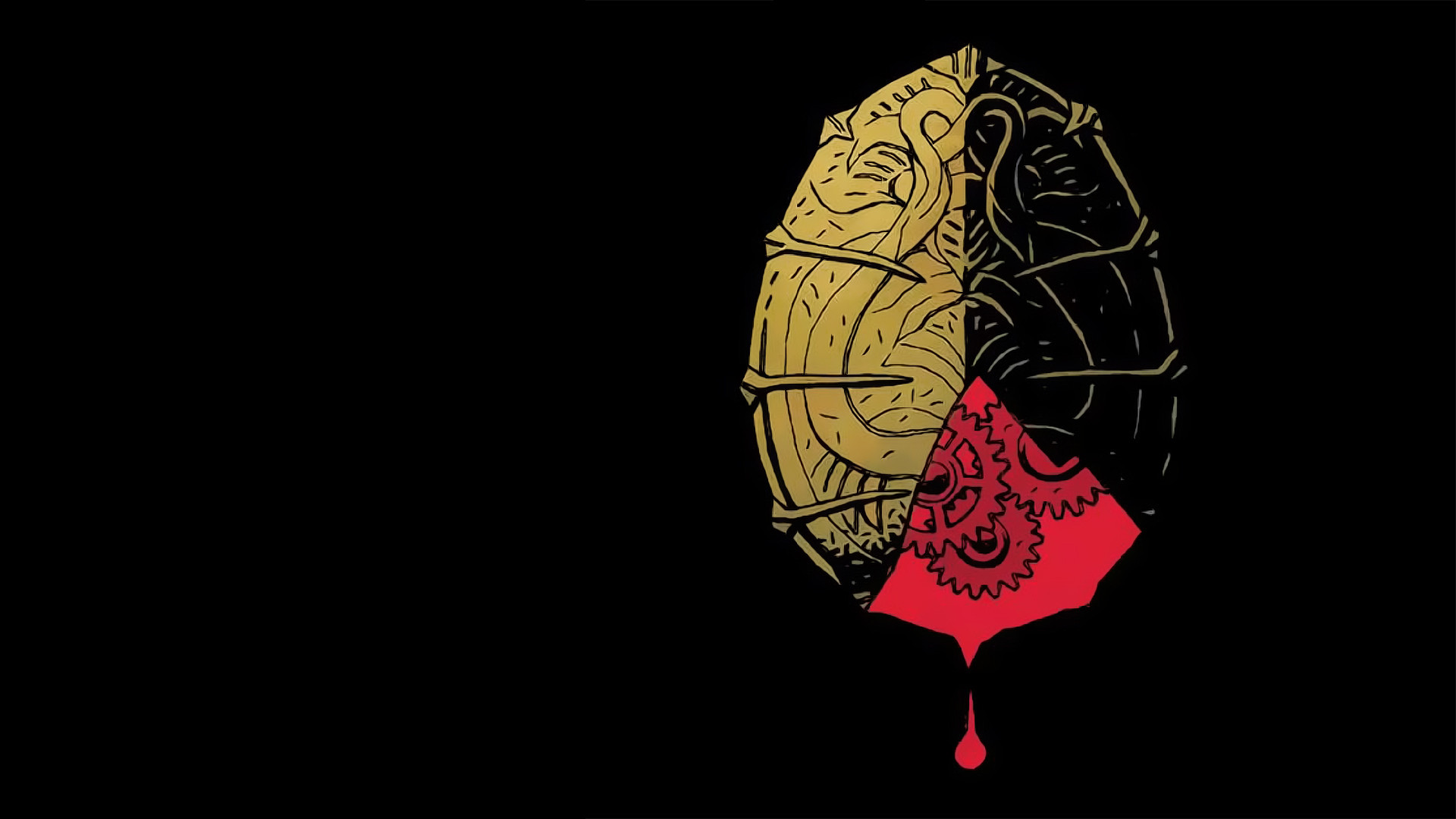There is a lot about eating in horror movies. Sometimes it’s a single meal (Ray Liotta’s brain, for example), other times it’s a pervasive theme to the entire movie, as in Troll 2 or The Stuff.
We’re focused on the bigger theme here, which is a bit of a shame because spending some time talking about that spaghetti scene in Se7en, or the finger in the french fries in The Hitcher, or that tasty Texas barbeque in Texas Chainsaw Massacre would have been fun. Don’t even get us started on Oldboy and the octopus!
5. Motel Hell (1980)
It takes all kinds of critters to make Farmer Vincent’s fritters!
Farmer Vincent (Fifties heartthrob Rory Calhoun) makes the county’s tastiest sausage and runs the Motel Hello as well. Now if swingers keep disappearing from the motel, and mysterious, bubbly moans echo around the farm, that does not necessarily mean anything is amiss.
Farmer Vincent, along with his sister Ida (a super creepy Nancy Parsons) rids the world of human filth while serving the righteous some tasty vittles. Just don’t look under those wiggling, gurgling sacks out behind the butcherin’ barn!
Motel Hell is a deeply disturbed, inspired little low budget jewel. A dark comedy, the film nonetheless offers some unsettling images, not to mention sounds. Sure, less admiring eyes may see only that super-cheese director Kevin Connor teamed up with Parsons and Calhoun – as well as Elaine Joyce and John Ratzenberger – for a quick buck. But in reality, they teamed up to create one of the best bad horror films ever made.
So gloriously bad!
4. Sweeney Todd: The Demon Barber of Fleet Street (2007)
Here’s a bizarre idea for a musical: The barber upstairs kills his clients and the baker downstairs uses the bodies in her meat pies. Odd for a Broadway musical, yes, but for a Tim Burton film? That sounds a little more natural.
Burton’s Sweeney Todd: The Demon Barber of Fleet Street is a full-on musical – Burton’s first – and every inch a stage play reproduction. For many films, this would be a criticism, but Burton’s knack for dark artificiality serves the project beautifully, and he achieves the perfect Dickensian Goth tone. His production is very stagy and theatrical but never veers from his distinct, ghoulish visual flair.
As in most of Burton’s best efforts, Sweeney Todd stars Johnny Depp in the title role. Depp is unmistakably fantastic – consumed, morose, twisted with vengeance – and he’s in fine voice, to boot.
With Burton’s help, Depp found another dark, bizarre anti-hero to showcase his considerable talent. With Depp’s help, Burton gorgeously, grotesquely realized another macabre fantasy.
3. The Bad Batch (2016)
Ana Lily Amirpour follows themes that fascinated her with her feature debut A Girl Walks Home Alone at Night, this time setting those preoccupations in a wasteland of conformity, survival and food.
The Bridge People are hyper-bulked up, ultra-tanned cannibals represented by Miami Man (Jason Momoa). They may not have access to steroids, but they’re certainly getting a lot of protein. The second community of Comfort offers a colorful, almost habitable environment led by charismatic leader The Dream (Keanu Reeves).
One version of America sees the vain, self-centered “winners” literally feeding on the weak. The second may seem more accepting, but it pushes religion, drugs and other “comforts” to encourage passivity.
Amirpour has such a facility with creating mood and environment, and though the approach here is different than with her debut, she once again loads the soundtrack and screen with inspired images, sounds and idiosyncrasies.
2. The Greasy Strangler (2016)
Like the by-product of a high cholesterol diet, The Greasy Strangler will lodge itself into your brain and do a lot of damage.
A touching father/son story about romance, car washes and disco, this movie is like little else ever set to film, showcasing unholy familial unions, men in their underwear, and merkins. (Look it up.)
Brayden (Sky Elobar) and his dad Big Ronnie (Michael St. Michaels – that is a name!) share the family business: LA walking tours of disco landmarks. They live together, work together, eat together.
Father and son possess a seriously unusual family dynamic that seems to work for them until they meet Janet (Elizabeth De Razzo – brave and funny). Both men fall for this “rootie tootie disco cutie,” and if that wasn’t enough, there’s a marauder on the loose – an inhuman beast covered head to toe in cooking grease.
The result is ingenious. Or repellant. Or maybe hilarious – it just depends on your tolerance for WTF horror and sick, sick shit. Whatever else it may be, though, The Greasy Strangler is – I promise you – hard to forget.
https://www.youtube.com/watch?v=VPl1vcb4hao
1. Dumplings (2004)
Fruit Chan’s Dumplings satirizes the global obsession with youth and beauty in taboo-shattering ways.
Gorgeous if off-putting Aunt Mei (Bai Ling) balances her time between performing black market medical functions and selling youth-rejuvenating dumplings. She’s found a customer for the dumplings in Mrs. Li (Miriam Yeung ChinWah), the discarded wife of a wealthy man.
With darkest humor and sharp insight, Chan situates the horror in a specifically Chinese history but skewers a youth-obsessed culture that circles the globe.
The secret ingredient is Bai Ling, whose performance is a sly work of genius. There are layers to this character that are only slowly revealed, but Ling clearly knows them inside and out, hinting at them all the while and flatly surprised at everything Mrs. Li (and you and everyone else) hasn’t guessed.
Gross and intimate, uncomfortable and wise, mean, well-acted and really nicely photographed, Dumplings will likely not be for everyone. But it’s certainly a change of pace from your day-to-day horror diet.








